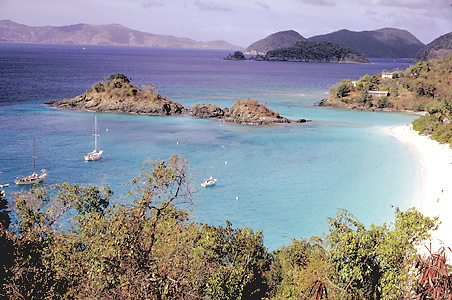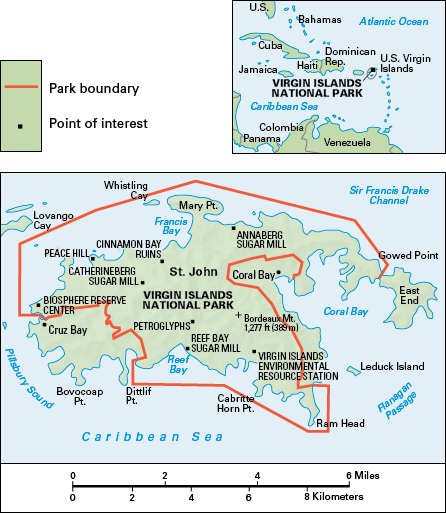Virgin Islands National Park lies chiefly on St. John, the smallest of the three chief American-owned Virgin Islands in the Caribbean Sea. The park was authorized on Aug. 2, 1956. Laurance S. Rockefeller donated over 5,000 acres (2,000 hectares) for it.

The park occupies about three-fifths of St. John, 15 acres (6 hectares) on St. Thomas Island, and about 5,700 acres (2,300 hectares) of waters and smaller islands. For the area of the park, see National Park System (table: National parks) . Lush tropical vegetation grows throughout the park. The land rises to 1,277 feet (389 meters) at Bordeaux Peak.


Mules and jeeps provide the chief methods of transportation. The park is reached by a 21/2-mile (4-kilometer) ferry trip from eastern St. Thomas Island across Pillsbury Sound to Cruz Bay, the main village on St. John. Two campgrounds are within the park’s boundaries. Tourist lodgings within a short distance of the park include beach resorts and guest houses.
Virgin Islands National Park has many reminders of the Danish occupation of St. John, which lasted from the 1700’s to 1917. Remains of Danish sugar mills and lavish plantations can be found.
